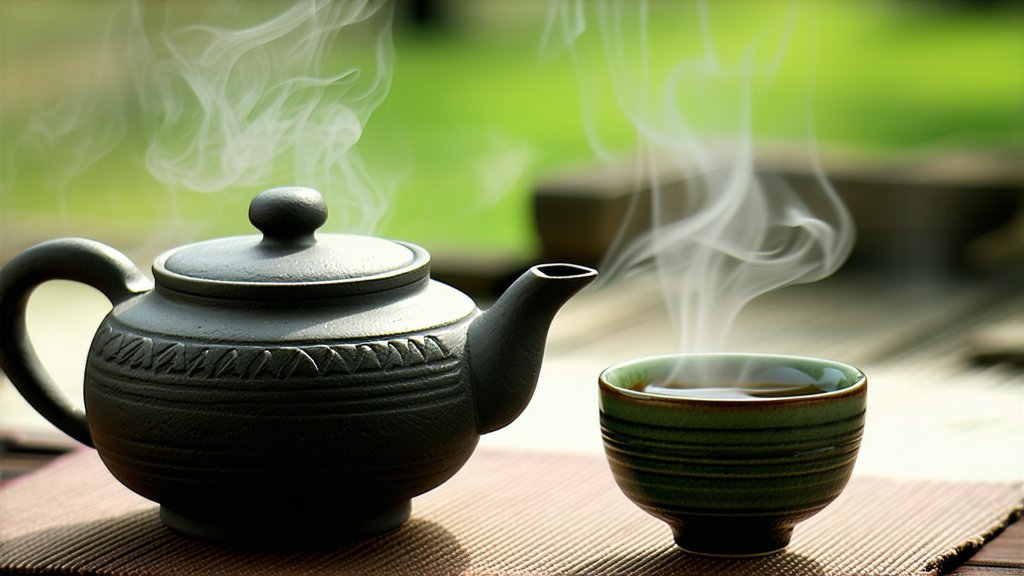
Tieguanyin, often hailed as the "Queen of Oolong" teas, represents one of the most revered and intricate varieties within the vast spectrum of Chinese oolong teas. Its name, which translates to "Iron Buddha," is a nod to its robust flavor profile and the legend behind its discovery. This article embarks on a journey through the annals of Tieguanyin's history, explores its diverse classifications, delves into the meticulous craft of its production, and guides you through the art of its appreciation.
Historical Origins and Legend
Tieguanyin's story begins in the lush hills of Anxi County in Fujian Province, China. The tale goes that during the Qing Dynasty (1644-1912), a poor scholar named Wang was tending his tea garden when he stumbled upon a divine revelation. He discovered a wild tea plant that bore leaves unlike any other—thick, sturdy, and imbued with a unique aroma. Wang propagated these plants and named his newfound treasure "Tieguanyin," symbolizing its resilience and the iron will it required to cultivate. Over time, this tea gained immense popularity, not just for its exceptional taste but also for the health benefits attributed to it by traditional Chinese medicine.
Varieties of Tieguanyin
Tieguanyin encompasses several sub-varieties, each with distinct characteristics shaped by factors such as altitude, soil composition, and processing methods. Among these, two stand out prominently:
-
Anxi Tieguanyin: The original and most renowned variety, hailing from Anxi County itself. It is characterized by its tightly rolled pellet shape, a deep green hue, and a complex flavor profile that balances floral notes with a hint of roasted nuts.
-
Gaozhou Tieguanyin: Grown in Gaozhou, Guangdong Province, this variant differs slightly in appearance, being more elongated than the Anxi version. It offers a lighter, more floral aroma with a smoother finish.
Both types share a common thread of excellence, reflecting the terroir and craftsmanship that define Tieguanyin tea.
The Craft of Tieguanyin Production
The creation of Tieguanyin is an art form that demands precision and patience. The process can be broadly divided into four stages: fixation, rolling, oxidation, and drying. However, within each stage lies a myriad of nuances that contribute to the tea's distinctive character.
-
Fixation: Freshly plucked leaves are quickly heated in a hot wok or drum roaster to halt enzymatic activity, preserving the green color and preventing oxidation.
-
Rolling: The leaves are then repeatedly rolled between bamboo mats to form their characteristic tight pellets, enhancing their aroma and allowing for even distribution of heat during subsequent steps.
-
Oxidation: Unlike black teas, oolongs undergo partial oxidation. For Tieguanyin, this step is crucial as it develops the tea's unique flavor profile, balancing sweetness and astringency.
-
Drying: Finally, the tea is gently dried to remove excess moisture, ensuring stability and longevity without compromising its delicate flavors.
Appreciating Tieguanyin: A Guide to Tea Tasting
To truly savor Tieguanyin, one must engage in a ritualistic approach that honors its complexity and depth. Here’s a guide to experiencing its magic:
-
Preparation: Use a Yixing clay teapot or a Gaiwan for optimal flavor extraction. Rinse the leaves briefly with hot water to awaken their aroma.
-
Infusion: Steep the leaves at around 90-95°C (194-203°F) for the first infusion, gradually increasing steeping times for subsequent brews. Tieguanyin can be resteeped multiple times, revealing different facets of its flavor profile with each serving.
-
Observation: Note the tea's color, clarity, and body. A well-brewed Tieguanyin exhibits a golden-green liquor with a silky texture.
-
Aroma: Inhale deeply before sipping to appreciate the tea's fragrant bouquet, which may include floral, fruity, or roasted notes.
-
Tasting: Sip slowly, allowing the tea to coat your palate. Pay attention to the initial taste, mid-palate experience, and aftertaste. A quality Tieguanyin should offer a harmonious blend of sweetness, umami, and a slight bitterness that fades into a refreshing finish.
-
Reflection: Take a moment to contemplate the tea's journey from leaf to cup, appreciating the centuries-old tradition and the artisan's skill that brought you this exquisite brew.
In conclusion, Tieguanyin stands as a testament to China's rich tea heritage, embodying the perfect marriage of nature's bounty and human ingenuity. Each cup tells a story of the land it comes from and the hands that crafted it, inviting us to pause, reflect, and connect with a piece of history in every sip.